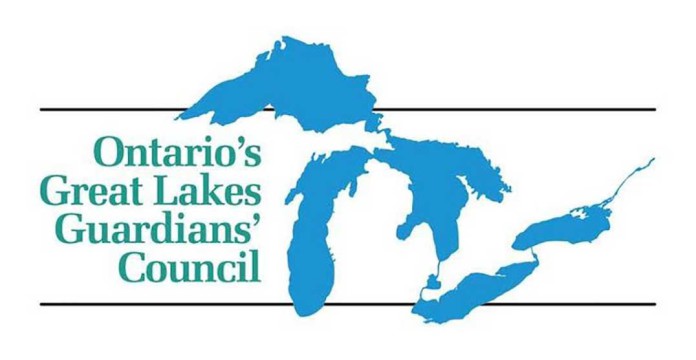By Ashley Whyte
GORE BAY—Gore Bay council passed its 2016 budget at its regular meeting on Monday, April 11, marking an expenditure increase of 2.8 percent and a 1.8 percent decrease in tax rate.
“The rate of inflation affects the overall costs and we have built that into our budget,” explained Gore Bay Mayor Ron Lane. “Significant expenditure cuts have also been made to decrease the tax rate.”
Council’s decision to decrease the tax rate was made after realizing the effect of increased assessment by the Municipal Property Assessment Corporation (MPAC). In an effort to lessen the burden on taxpayers, the municipal rate was reduced from 0.015038 to 0.014799, plus education tax at .00195 for a total rate of 0.016749. This means that for a residential assessment of $100,000, taxpayers can expect to pay approximately $1,674.90, that’s a $23.90 decrease from last year. (Please note that each taxpayer is affected differently depending on the MPAC assessment of their property.)
The current levy of $999,386 was arrived at by cutting $243,556 from the original proposed budget of $1,242,942. Office flooring, furnace, walkways as well as road resurfacing, drainage and other maintenance costs are just some of the proposed expenditures that were not included this year, but will be considered in next year’s budget.
Highlighted expenditures in the 2016 budget include gas pumps, sidewalks, road construction and rehabilitation, legal fees, maintenance of trails and the arena as well as the creation of a public parking lot.
The budget will also cover the development of a new website for the Town of Gore Bay, which will tentatively be up and running for tourist season.
The 2016 budget will be greatly supported by municipal levy and provincial grants (total of 69 percent), with the remainder supported by revenue generating operations such as the marina, rentals and theatre.
Additionally, the council reported a surplus of $64,478 in spending last year and discussed potential options for allocating the funds. “The amount can be rolled over to 2016 as deferred revenue and placed in the General Reserve Fund,” suggested town clerk Annette Clarke. “The amount will then be available if and when it is needed in the case of unexpected costs, such as the replacement of equipment.”
All council members agreed to Ms. Clarke’s suggestion and emphasized the importance of contributing to the town’s reserves, as it had not been possible for the last few years.
Ms. Clarke also noted that there is approximately $150,000 in the General Reserve Fund at this time and advised that the town is seeking financial guidance to better invest and appreciate its capital.
Other budget-influencing aspects were scheduled for discussion at the meeting, including a short-term plan for the pavilion, which has been vacant for over two years now.
“We’ve not only reduced the rate, but created a single base cost for leasing the pavilion, which will include water/sewer and taxes, with hydro being an additional cost,” stated Mayor Lane.
Several council members expressed concern over the risk of a month-to-month lease, which was part of the original proposal.
“It would be unfortunate for someone to lease the space and then decide in a month or two that they want out of it,” stated Councillor Ken Blodgett.
Previously, the length of the pavilion lease was for a full year, meaning that tenants were paying rent for periods of time they couldn’t actually use the building, due to the fact that it is not winterized. Taking this into consideration, as well as the potential negative impact of a monthly lease, council decided to make an amendment to the initial proposal to include a minimum lease period of five months (from May to September or June to October). This way tenants will benefit from a relief on the overall cost to lease the property and the town can ensure that the space is rented for the full season.
Another subject of discussion was a revenue generating opportunity for the town in the form of a stop up and close. A request has recently been made to purchase a portion of Park Street that is currently not in use. The property is needed for proposed development which would benefit the municipality from a tax assessment and housing perspective.
Councillor Dan Osbourne questioned who would be responsible for expenses involved with the process and sale of the road allowance, concerned that the Town might become liable.
“The purchasers of said property would be responsible for all expenses,” commented Ms. Clarke. “An easement would also have to be put in place in order to allow the continued use of the property by pedestrians or for driveway access.”
If the road allowance is sectioned and sold off, it would first become available to adjacent property owners and in the event that they do not want to purchase, it could be acquired and sold by the municipality.
The creation of a new lot on Phipps Street by Hugh and Mollyanne McLaughlin was also discussed at the meeting, with an emphasis on the implications of creating water and sewer access to the area.
“We should be mindful of running lines across other properties,” stated Councillor Kevin Woestenenk, “We also don’t want to be digging up our main street. The best thing to do would be to hook up on the back street if possible.”
Council members and Mayor Lane collectively agreed with Mr. Woestenenk’s suggestion and that it would be best to avoid any activity on the main street that might impede traffic or business, especially if it were to take place during tourist season.
Additionally, council was delighted to announce that Harbour Days is a go again this year, with a number of new exciting activities such as tube and paddle board races, a basketball skills and drills clinic as well as a beach volleyball tournament.




